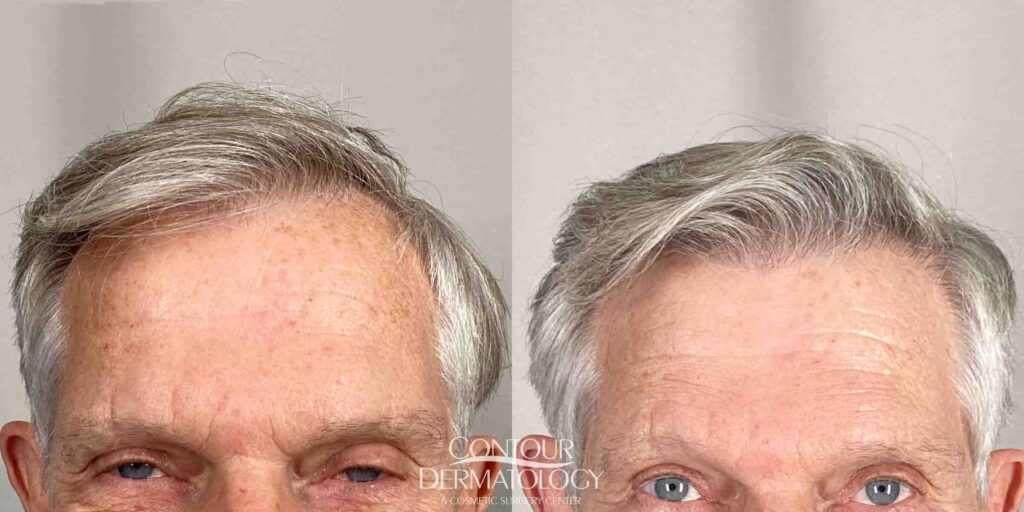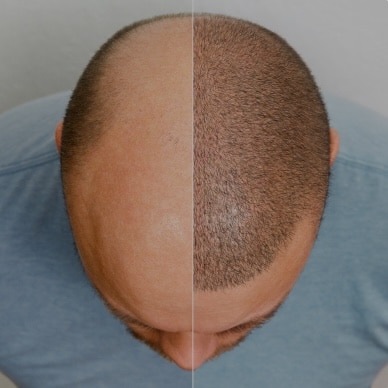Thinking about fixing thinning hair or a receding hairline? In 2025, Follicular Unit Extraction (FUE) is the modern, minimally invasive approach many patients choose for natural-looking results and shorter visible downtime. Below, Dr. Timothy Jochen explains—in his own words—how FUE fits into today’s options, and we’ll show you where you can schedule a consult at Hair Restoration Center’s California and Florida clinics.
What Dr. Timothy Jochen Says About Your Options
When it comes to surgical hair restoration, Dr. Timothy Jochen explains that techniques have evolved dramatically in recent years. “A couple of the treatment options surgically include follicular unit extractions and also scalp reductions. Scalp reductions are almost never done anymore because the procedure has progressed,” he says. Today, Follicular Unit Extraction (FUE) has become one of the most sought-after methods, particularly for patients who prefer short hairstyles or who have tighter scalps that make strip grafting more difficult. As Dr. Jochen notes, “FUE is an option for people who want to wear their hair short or when the scalp was too tight for further strip grafting… it can also be used to camouflage scars from previous surgeries.”
He describes the technique as a meticulous process designed for natural-looking results: “With follicular unit extraction, we take very teeny punches where we take out one, two, or three hairs and then we transplant them to the recipient site.” While FUE continues to rise in popularity, Dr. Jochen acknowledges that traditional methods still have their place. “The gold standard is going to be to do strip grafting for hair transplantation,” he adds; reminding patients that the best approach depends on their goals, scalp condition, and desired outcome.

Dr. Timothy Jochen, Hair Restoration Center at Contour Dermatology
Beyond surgery, Dr. Jochen emphasizes a holistic view of treatment. “Some of the medical options include FDA-approved drugs which include Propecia and Rogaine,” he says. He also highlights emerging and supportive therapies: “The non-FDA-approved drug dutasteride shows promise for androgenetic alopecia… Hair and nail vitamins and certain shampoos are not FDA-approved, however I do recommend these for my patients.” For those not yet ready for surgery, “Other non-surgical options include hair systems or wigs, hair extensions, and low-level laser therapy.”Finally, Dr. Jochen encourages anyone considering hair restoration to take the first step toward understanding their options. “For those of you who are interested in hair restoration surgery, I highly encourage you to come in for a consultation… We also are happy to do online consultations as well as telephone consultations.”
Why FUE Is Popular With Patients in 2025
- No long, linear scar (tiny dot extractions instead), which makes it friendly for short hairstyles—exactly the scenario Dr. Timothy Jochen calls out.
- Automated/robot-assisted FUE options (e.g., NeoGraft and ARTAS®) can improve precision and graft consistency, further supporting natural results.
How FUE Actually Works (and What You Can Expect)
At the Hair Restoration Center, NeoGraft® technology brings precision and gentleness together in one of the most advanced forms of FUE available today. The system uses controlled pneumatic pressure to carefully extract individual hair follicles, no scalpel, no stitches, and no linear incision. That means less discomfort, faster healing, and results that look natural even with short hairstyles. Every treatment is tailored to the individual, with attention to artistic hairline design, natural density, and clear, transparent graft estimates so patients know exactly what to expect.
For patients seeking even greater accuracy, ARTAS® Robotic FUE takes the process one step further. Using AI-guided imaging and robotic precision, ARTAS® maps, selects, and harvests follicles with remarkable consistency. This technology helps reduce human variability, making the procedure faster, more efficient, and exceptionally natural in appearance, restoring not just hair, but confidence.
Explore our FUE Hair Transplant Cases



Is FUE Right for You?
Dr. Timothy Jochen’s guidance (plus our experience) suggests FUE can be a great fit if you:
1. Want to wear hair short without a telltale strip scar.
2. Have a donor area that can safely supply grafts.
3. Are seeking scar camouflage or smaller “touch-up” cases (eyebrows/eyelashes/beard, or to blend old scars).
4. Prefer a minimally invasive approach with discreet healing.
During your consult, your physician can also discuss medical add-ons (finasteride/“Propecia,” minoxidil/“Rogaine”) and non-surgical support (LLLT laser caps, supplements) to maintain improvements long-term, exactly as Dr. Jochen recommends.
FAQ
Will I definitely need medication too?
Not always, but many patients combine surgery + FDA-approved therapies (finasteride, minoxidil) and/or non-surgical options (LLLT, supplements) to protect the investment and manage future loss. Your doctor will tailor a plan.
Is FUE better than FUT (strip) for everyone?
No. As Dr. Jochen notes, FUT still has a role depending on goals, donor supply, and budget. Your surgeon will explain trade-offs.
How soon will people notice?
Initial healing is relatively quick; new hairs typically start growing in months 3–4 and keep maturing through months 9–12. (That timeline is typical for FUE in general.)






